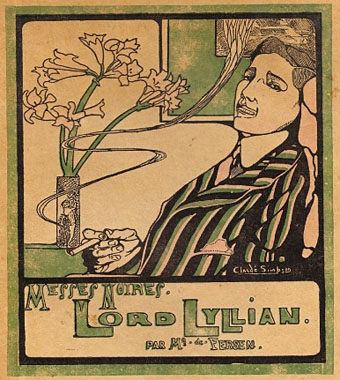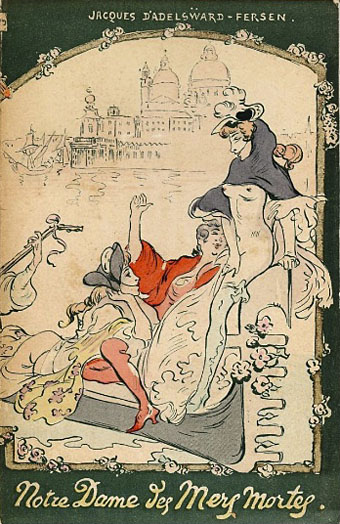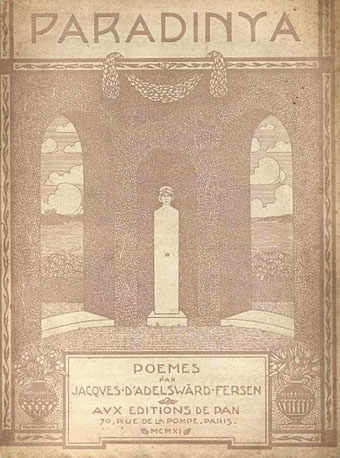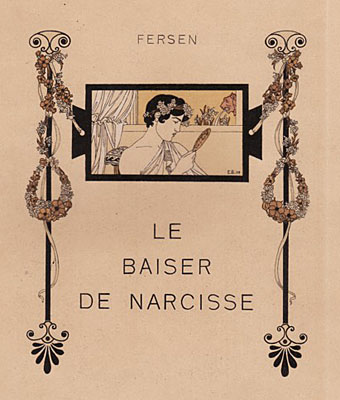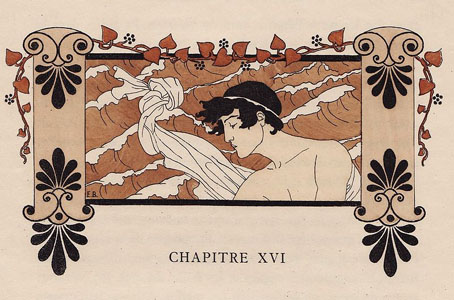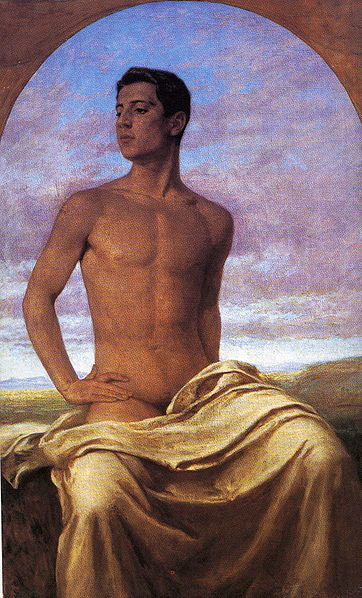Messes Noires. Lord Lyllian (1905).
An email earlier this week from French bookdealer Chez les libraires associés contained a link to an online catalogue of books by or related to that disreputable Uranian Jacques d’Adelswärd-Fersen, the subject of this earlier post. The catalogue describes the poet as “l’Oscar Wilde français” which isn’t strictly true since Wilde had (and has) a far higher literary reputation. And when it came to homosexual scandal Fersen didn’t suffer anything like Wilde’s appalling treatment, he simply decamped (so to speak) to Capri with his boyfriend, Nino Cesarini. The latter is the subject of another document linked in the same email, Nino et son jumeau, an investigation (in French) concerning “Faces and legends of the friend of Jacques d’Adelswärd-Fersen. What is known of the appearance of Nino, are there pictures of him by von Gloeden, von Plüschow or Vincenzo Galdi?” A number of the pictures in question show Nino and others in various states of undress so those wishing to view the pages will need to be registered at Issuu first.
A couple more covers from the catalogue follow. All these publications are rare and correspondingly expensive but I still find it fascinating seeing any of this material at all when it’s been proscribed and ignored for so long. While we’re on the subject, I’ve only just noticed that Fersen’s Le Baiser de Narcisse (with illustrations by Ernest Brisset) can be viewed complete at Gallica.
Notre-Dame des mers mortes (1902).
Paradinya (1911).
Elsewhere on { feuilleton }
• The gay artists archive
Previously on { feuilleton }
• Le Baiser de Narcisse

